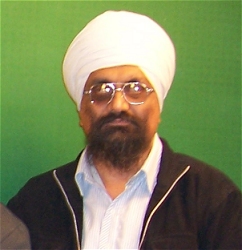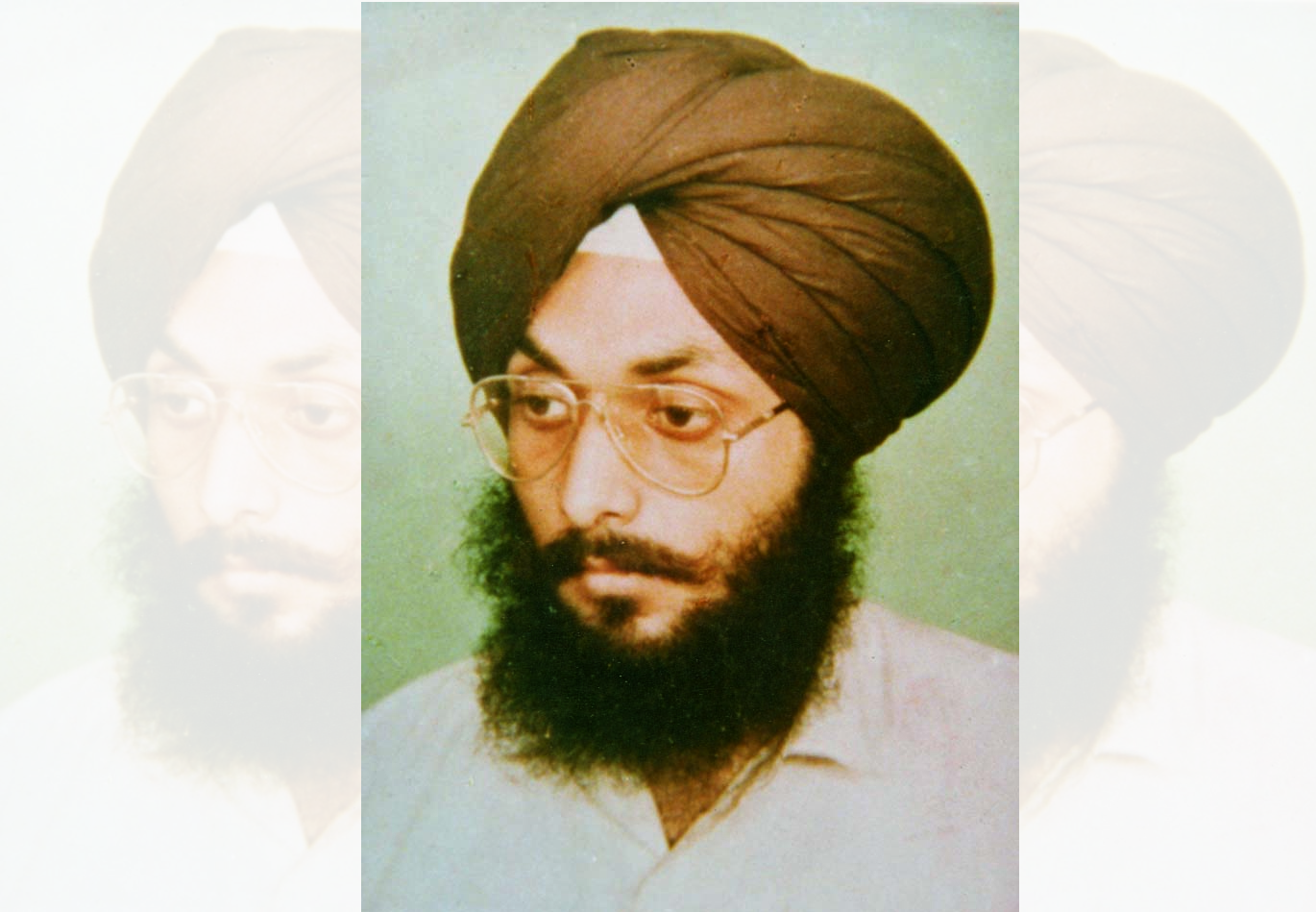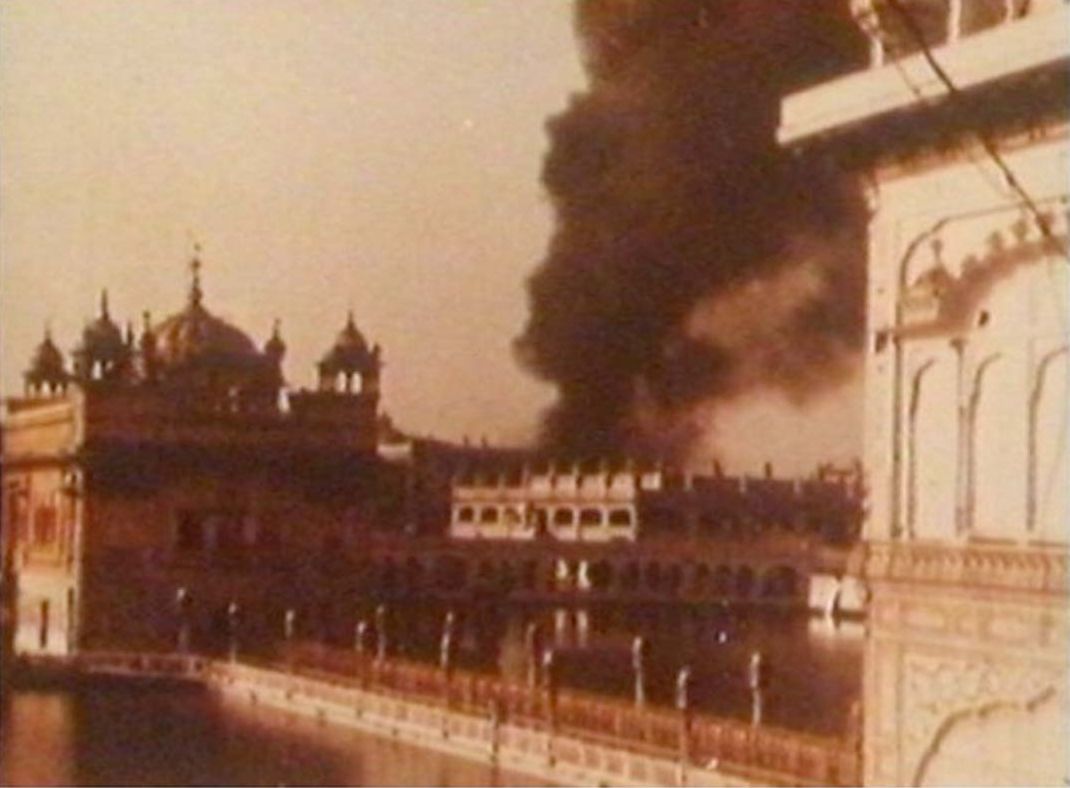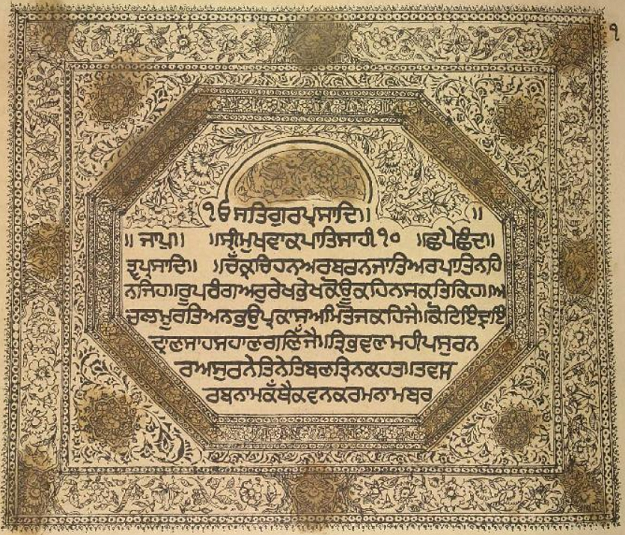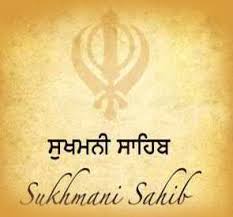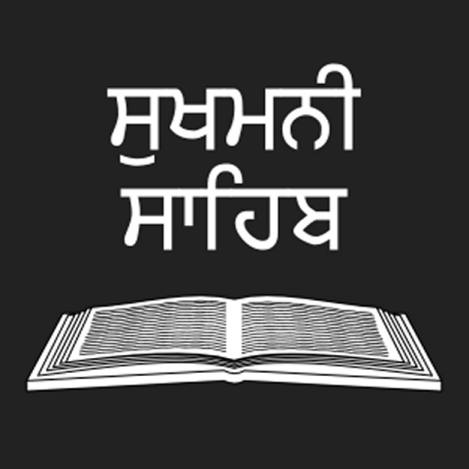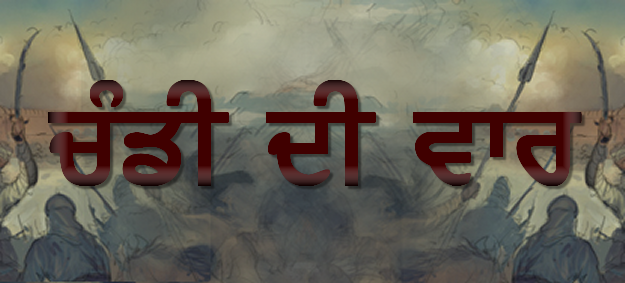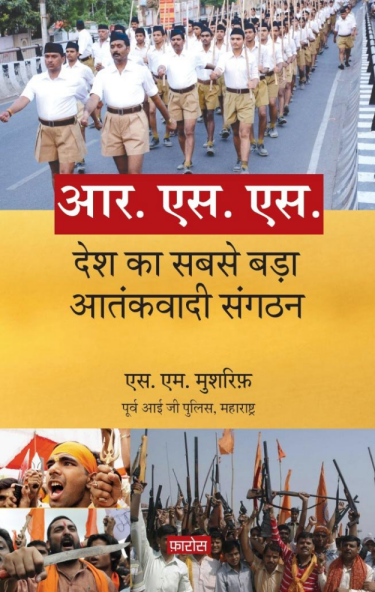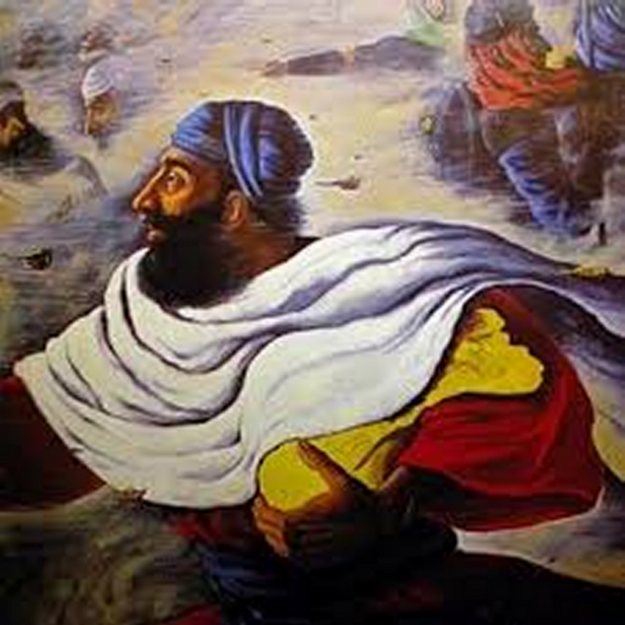
-Guru Tegh Bahadur Ji always sings the sorrows of created life, and converts them into a vision of Heaven- a joy of self-realization. He finds joy nowhere but His Naam and praise, and he exhorts everyone to be of that spirit.
-Forget yourselves, O people, but forget not the Beloved. Forget not, in your gifts, the great Giver.” Such is the message of Guru Tegh Bahadur; which, sinking deep in the heart, makes life not painful, but delicious. It makes men sleepless, but full of the peace of the Infinite. Guru Tegh Bahadur’s word bestows on us a repose which no death can shake. It is the greatest solace ever uttered of the Sikh martyrs!
-The kings of the land were then the avowed enemy of the Sikh, who was compelled to be ever ready to lay down his life for Truth. The hymns of Guru Tegh Bahadur Ji were composed to infuse the spirit of fearlessness into disciples, as there were times coming when the Sikhs would be called on to embrace death as a bride. Guru Tegh Bahadur’s resolve to die for the cause inspired every Sikh man, woman, and child, once more with willingness to die
-The Master was kept in prison at Delhi and tortured there, under the orders of Aurangzeb. But all torture was to him as a mud spray against a mountain wall. Like Guru Arjan Dev Sahib, Guru Tegh Bahadur Sahib never for a moment took his mind out of the Dhyanam of Reality (did not stop devotion to Naam). Not a thought of curse or retaliation disturbed his peace, not a frown wrinkled his shining brow.
BABA BAKALE
“Baba Bakale”- He is at the village Bakala! Many imposters, distant blood-relations of the Master, proclaimed themselves the new Nanak. But the trained disciples well knew the fragrance of the soul that comes from the true Beloved. They soon found their Master. So great was the joy, that a disciple, Makhan Shah got on top of a house and cried in ecstasy to the heavens and the earth, “Guru Ladho! Guru Ladho!” The Master is found! The Master is found!
(Guru) Tegh Bahadur Ji had lived till now in extreme abstraction and in awful solitude. None could go near him, such was his reserve, inaccessible as the high peak of a mountain. His Dhyanam-abstracted look disconcerted people; and they passed him by, called him “Mad Tegha.”
Till now, we have seen that every reincarnation of Nanak that has shown before us was different and yet alike. Guru Tegh Bahadur Ji could not bear the sight of creation without a deep agitation of soul. He could not but suffer from a profound sadness on seeing the helpless destiny of man’s life imprisoned under the “Inverted Bowl” of this blue sky. He could live in the Dhyanam of the Beloved, and no where else. So sympathetic, so saddened by the world’s distress was he, that he would have died of sympathy, had he not been put in the centre where shines the light of the Beloved. If God had not caught his mind in the magic net of His own Effulgence, if Guru Tegh Bahadur Ji had not found peace in the spirit of Nanak, his temperament would have led him to one of those who sacrifice themselves. He would lay down his life to save a poor cow from being led to the slaughterhouse, in order to escape the pain of the great illusion.
Guru Tegh Bahadur Ji always sings the sorrows of created life, and converts them into a vision of Heaven- a joy of self-realization. He finds joy nowhere but His Naam and praise, and he exhorts everyone to be of that spirit. “Do they make ropes of wet sand on the river bank, who rely on the riches of this earth? Like a picture painted on waters, like a bubble on the wave is not all this magic of evanescence unsatisfying? O Man! thy supreme vocation is to live in the Beloved!” Guru Tegh Bahadur’s note is Renunciation: He dwells only upon the nearness of His Beloved, and the enlargement of the Divine Idea in human life. The pleasures of life are so many pains; but, as Guru Tegh Bahadur Ji says, all realization of Truth and its joy springs from theses hard pains. Shed your tears for the sorrows of the world, but make them into a rosary for telling the beads of Hari Naam.
Sorrow is your wealth, suffering your gladness of soul, if you are really great as He Himself.
Your optimism is austere and ascetic, and never can be reconciled to life but in Him.
Guru Tegh Bahadur’s mind is ever awake. It alone is made for ever free of the drowsiness that the Maya of life induces in every one. “To forget One and to feel enamored of another reality, is Maya,” says the Master. “You shall sleep not, O Bride! If you have chosen to wait for the king tonight.” Guru Tegh Bahadur’s emphasis on this aspect of the Dhyanam of the disciple is as great as that of the older Nanak, judging by their songs. “O Brother! Nothing in this world can be thine for ever; therefore think of Him alone, and live retired from the sorrows of life. Plunge yourself again and again into thought, and see what the world contains that can promise aught but the illusions of magic colors, snaring you again and again without purpose. Therefore, turn within and see the Truth within yourself.”
Guru Tegh Bahadur Ji was so tender in his being, that he ought not to have been allowed to come in contact with the suffering of the people. His poems are tears shed for them in the silence of his heart. Soft as a rain cloud, his songs awakened the dry hearts of men.
“Forget yourselves, O people, but forget not the Beloved. Forget not, in your gifts, the great Giver.” Such is the message of Guru Tegh Bahadur; which, sinking deep in the heart, makes life not painful, but delicious. It makes men sleepless, but full of the peace of the Infinite. Guru Tegh Bahadur’s word bestows on us a repose which no death can shake. It is the greatest solace ever uttered of the Sikh martyrs! What reck we of this earthly life? We lay it down for a higher life that put forth its signblossom in the Window of the Soul! Nothing matters. What are fetters to our feet, when we see wings already spread for our soul to fly to the Beloved? What is torture, or death, or wrath of kings, when to our inner ear the angels are already singing victory? What injury can fire do to us, or waters, or swords, when we see beings made of light take us in their embrace and support us in a faith that we are His and He is ours and all is made of light and song and joy?”
GURU TEGH BAHADUR SAHIB JI AND AMRITSAR
The seat of the Master and the disciples, as we said, had shifted to Kiratpur; and Amritsar was already in the hands of imposters, priests who saw the money to be got by priest-craft at Harimandir Sahib. When the Guru had gone towards the hills, the disciples also departed thither and only priests remained behind. Since the time of Guru Arjan Dev Ji, there had sprung up a kind of civic administration, which collected the offerings of people at large for the upkeep of the Sikh cities, temples and tanks. Often the administration got into the hands of people other than the disciples, though everyone was eager to call himself a Sikh in those halcyon days. For some time the civic administration worked well; but later the surrounding enemies of the House of the Master came in and enlisted as Masands or collectors of offerings, and made the whole administration inimical to the disciples. They afflicted the true disciples in many ways, and the disciples endured without a sign or murmur all that came from Masands in the name of their Beloved. A full revelation of their ill-doing was made to Guru Gobind Singh in a drama played before him at Anandpur, and it was he who abolished the Masand administration and destroyed the tyrants.
The signs of this tyranny were visible when Guru Tegh Bahadur Ji paid a visit to Harimandir Sahib. The priests shut the doors of the temple against the Master, and he said, “The priests of Amritsar are men of blind heart that burn in their own lust of greed.” But, as the news spread, all Amritsar came out to pour their soul at his feet. The women of the Holy City of Song welcomed him with the Master’s song, and went singing all the way with him to the village Walla, where he stayed in the lowly abode of a devoted disciple.
Guru Tegh Bahadur Ji could not stay in one place, for the accumulating sorrows of the people grew to be more than he could bear. He was perpetually on tour, meeting his disciples in villages and in lonely jungle-huts. He traveled as far as Dacca and Kamrup in the East burning lamps of human hearts in memory of Guru Nanak Sahib, wherever the Master had been before him. At Dhubri, Guru Tegh Bahadur Ji raised a mound. He organized a Sangat in Assam, and illuminated many a family with the light of his face.
BIRTH OF (GURU) GOBIND RAI JI
During his travels towards the East, in which his mother and his wife accompanied him, his son (Guru) Gobind Rai Ji was born. Guru Tegh Bahadur Ji had to leave his wife at Patna when he went to Assam. (Guru) Gobind (Rai Ji), the Bala Pritam, the Child-Beloved, was born at Patna in the absence of his father. When the latter returned from his tour of Assam, he lived at Patna for some time; but left them again there, when he with his five disciples journeyed on to Anandpur in the Punjab. He did not wish the mother to travel till her baby had grown old enough to bear the journey to the Punjab. Guru Tegh Bahadur Ji was at Anandpur, when his family were at Patna, where (Guru) Gobind (Rai Ji) spent his childhood and part of his boyhood. The parting from Guru Tegh Bahadur Ji was always poignant for his mother and wife, and now for his child also. “But such is the call of the Heavens,” he used to tell them as he left. As we see, after an unusually long absence they had met at Patna to be separated this time for many years.
BALA PRITAM, THE CHILD-BELOVED
The irrepressible spirit of Guru Gobind Singh Ji as a boy are recorded by a true disciples of his in a book called Bala Preetam, recently published by the Khalsa Tract Society, Amritsar. It is the result of careful study of the Patna life of Guru Gobind Singh Ji which recalls the analogy of Krishna. At Patna he won all hearts, and became a new centre of Dhyanam for devotees to whom he was able to give the Divine signs that characterize spiritual genius. He would appear as Rama or as Krishna, in response to the wishes and visions of the people of Patna. In the bright disc of the mourning sun, seated on the banks of the Ganges, the self-closed eyes of these devotees saw (Guru) Gobind (Rai Ji) , the Beloved, standing in the sun and shooting golden arrows from his blue bow.
As a boy he used to play tricks upon Patna housewives and the maidens and to overcome them with mirth. Breaking and piercing their earthen pitchers with his arrows he diverted all and delighted himself. Mata Gujri Ji, the grand-mother of (Guru) Gobind Rai (Ji) , gave them new pitchers every time.
Raja Fateh Chand Meni and his queen are childless. The disciple Pandit Shiv Dutt points out (Guru) Gobind (Rai Ji) to their empty eyes. The king and the queen think of the merry boy, and pray for a child. One day the boy goes stealthily to their place, and sees the queen sitting in deep reverie with her eyes closed. He approaches her very quietly, and suddenly throws his little arms around her neck; and, as she opens softly her rapture-red eyes, he looks into them and says, “Mother!” The (Guru) Gobind (Rai) Ji’s one word “Mother” takes away all her lifelong grief. He fills her heart and that of Fateh Chand with himself. God comes to them as a child, for they want a child!
The whole of Patna was (Guru) Gobind (Rai) Ji’s. He was the shining spot where people saw God. Gladness came to them when they saw him, conversed with him, touched him, or were playfully teased by him. (Guru) Gobind Rai (Ji) displayed infinite mischievousness which his mother and grandmother, interpreting it as a sign of coming greatness, ignored. Years afterwards when Bala Pritam was at Anandpur, his disciples of Patna went to him on a holy pilgrimage. The old frail frame of Shiv Dutt accompanied this caravan of disciples, led by Raja Fateh Chand and his queen. The Master came many miles to receive them. Still mischievous, he concealed himself and let the caravan pass; and then, getting behind the palanquins that bore Shiv Dutt, Raja Fateh Chand, and the queen, he startled them with his old Patna whoop; throwing them all into that kind of joyful confusion in which everyone ecstatically forgets himself. Thus did Bala Pritam meet his devotees again.
Guru Tegh Bahadur Ji had but a brief time at Anandpur, where his family from Patna had now joined him. (Guru) Gobind (Rai Ji) was about eight years old. During this brief sojourn, he made Anandpur the city of the disciples. It was already their natural fortress when they needed shelter. The kings of the land were then the avowed enemy of the Sikh, who was compelled to be ever ready to lay down his life for Truth. The hymns of Guru Tegh Bahadur Ji were composed to infuse the spirit of fearlessness into disciples, as there were times coming when the Sikhs would be called on to embrace death as a bride. Guru Tegh Bahadur’s resolve to die for the cause inspired every Sikh man, woman, and child, once more with willingness to die.
The emperor Aurangzeb had adopted a cruel policy of extermination against the Sikhs, whom he considered to be grave political danger to his centralized empire. It is well known now how he persecuted the non-Moslem, constantly dreaming of a Moslem empire in the subcontinent. Had he succeeded, it would have been one of the greatest historical achievements for the Moslem, and the name of Aurangzeb would be one of the greatest. But he failed to massacre the non-Moslems in numbers sufficient for the attainment of his purpose.
However, the Hindoo shrines were thrown down in cities like Benaras and Brindaban in broad daylight, and mosques raised instead. The official sword put to death all those who refused to accept Aurangzeb’s political religion. Darkness of pain spread all over the country, and despair filled the house of the non-Moslem. Nothing was held sacred- mother, wife, daughter and cow, of the non-Moslem, were considered the rightful property of the Mussalman. To kill a Hindoo, ‘a Kafir’ was represented as a religious duty. The Mohammedan law was interpreted to sanction the annihilation of those who refused the authority of Islam. The whole country rose, with one cry, one prayer, and one curse, against the blind tyranny. The Hindoos of the Brahman caste from Srinagar, Kashmir -the Guru’s Kashmir- flocked to Anandpur, bewailing their lot in that high solitude of the Himalayas where the Moslem Governor had nothing but death and torture and shame for them. His fury knew no control and his tyranny no limit. The Master had heard the wail of the people long before they came but now the time had come when he must rise and sacrifice himself to make the people free, even though their beliefs were different from his own.
On the day when he was to give his decision, his young son (Guru) Gobind Rai (Ji) approached him and enquired, “O Father! Why are you so silent today?” He replied: “You know not my child, the state of the people. Their rulers are as wolves, and there is no end to their misery and shame.” “But what is the remedy father?” said the child. “The only remedy, my child, is to offer a God’s man as an oblation in this fire; then the people will be secured from this misery,” said the father.
“Offer thyself, father, and save the people,” said (Guru) Gobind Rai (Ji). The child was right, there was nothing else to do; the Master must sacrifice himself for the people, the son of God must be bled to pour life into the people-such is the ancient mystic law of life.
The Master was again obliged to take leave of his beloved son, his mother, and his disciples; and this time his journey was to a destination whence he would not return to them in that familiar physical shape. The city of Anandpur was by this time all put in order. There was the Master’s botanical garden, a never failing fountain, the academy of disciples, the temple of his praise, where gathered his disciples from far and near, with that joyous hilarity of soul, which was found nowhere else but at his feet. (Guru) Gobind Rai (Ji) was to be the Tenth Master as was universally known. The steel of ages past and ages to come shone with the blue glint in the aura of the child (Guru) Gobind (Rai Ji). The Dhyanee eyes saw him ever as a child, touching the heavens with the crest of his turban. He was the Talisman of eternity, that could melt sun and the moon and infuse the light into men’s hearts.
Even in the presence of Guru Tegh Bahadur, Anandpur Sahib shone with (Guru) Gobind (Rai Ji), who had already learnt the arts of archery, sword-playing, and horsemanship. He had learnt how to make poems, at the feet of his father; there were gathered at Anandpur to equip him with the best possible training in the arts of life. This time it was not the disciple (Guru) Gobind (Rai Ji) that had to part from the Master, as it was the case of the disciples (Bhai) Lehna (Ji), (Guru) Amar Daas (Ji), and (Guru) Raam Daas (Ji) ; it was the Master that was to go from his disciple. The disciple, (Guru) Gobind (Rai Ji), already initiated by the Master into the perfection of Guru Nanak’s Dhyanam, and to remain at Anandpur, and the Master had to tear himself away from the Beloved.
The emissaries of Aurangzeb came to Anandpur to summon the Master to Delhi; but he would not go with them, he promised to follow. He had yet to go to see disciples who were thirsting for him, those that lived on his way to Delhi. He took his own time and his own road; it lay through the midst of his disciples, and it lay covered with their flower-offerings. At Agra the Master with five chosen disciples delivered himself to the Emperor’s men there awaiting him-he had taken so long in coming that they doubted his promise. He was then taken to Delhi.
The Master was kept in prison at Delhi and tortured there, under the orders of Aurangzeb. But all torture was to him as a mud spray against a mountain wall. Like Guru Arjan Dev Sahib, Guru Tegh Bahadur Sahib never for a moment took his mind out of the Dhyanam of Reality (did not stop devotion to Naam). Not a thought of curse or retaliation disturbed his peace, not a frown wrinkled his shining brow. As calm as at Anandpur, he maintained a peace of mind that the dissolution of the three worlds could not have disturbed. Bhai Mati Daas, seeing him in prison, felt deeply agitated and said “O Master, permit me to go. I will immediately make the ramparts of Delhi strike against the ramparts of Lahore, in a thunder-stroke, reducing all this false empire to thin powder. Allow me, I will crumble these tyrants like clods of clay in my hand.” “O brother,” said the Guru, “this is true; but our task is to mediate on Him (Akaal). Ours is to live in His will and to be happy seeing it work. Ours is not to plan out our own defense, seeing that the Beloved receives our injuries in His own heart.” Bhai Mati Daas fell speechless at the Master’s feet. Truly the essence of real power is to live in the supreme peace, come death or torture. The great never complain.
The Master was asked to accept Aurangzeb’s political religion, or to die. He chose death. Bhai Mati Daas was sawn across at Delhi as if he has been a log of wood. The saw was made to run through his body as he stood erect. The more they pierced Bhai Mati Daas with it, the deeper resounded from his flesh the song of Naam; for after his agitation, he had been embraced by the Guru and thus put in the centre where there is no pain. The other Sikhs left for Anandpur with his messages, his poems, and the offerings of a coconut and five pice to (Sri) Gobind Guru.
Guru Tegh Bahadur Sahib was beheaded in Delhi, as he sat under the banyan tree reciting JapJi. That banyan tree still stands. The emperor Aurangzeb had insisted on seeing some miracle of the Master. “Cut off my head with your sword and it will not be cut,” so had said the Master. A great dust storm swept that day over Delhi, and the sky was blood-red. This storm of dust carried off the empire of Aurangzeb as if it were a dead leaf lying on the road. The Master yet lived.


